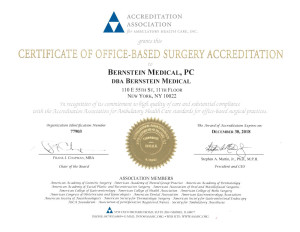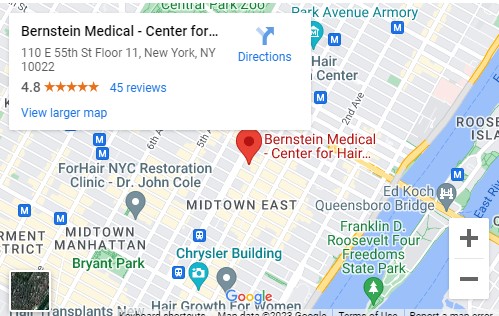Q: I am an MMA fighter and I want to get a hair transplant. How long do I have to be out of commission and which type of procedure should I have, FUE or FUT? — J.A., Columbus, OH
A: With any type of hair transplant it takes 10 days for the transplanted grafts to be permanently fixed in place. The difference between FUE and FUT is in the limitations of activity due to the donor area. With FUE one would need to abstain from MMA for the same 10 days it takes the recipient area to heal (the grappling component of Mixed Martial Arts is the most stressful on the scalp). With FUT, however, one would need at least three months for the linear donor scar to heal before one could resume contact sports like MMA.


 Dr. Andrew Ordon — Emmy-nominated co-host of the award-winning talk show “The Doctors” — and Dr. Robert Bernstein met at Bernstein Medical – Center for Hair Restoration in New York City on March 3, 2016 to discuss the latest advances in
Dr. Andrew Ordon — Emmy-nominated co-host of the award-winning talk show “The Doctors” — and Dr. Robert Bernstein met at Bernstein Medical – Center for Hair Restoration in New York City on March 3, 2016 to discuss the latest advances in 
 Gone are the days when women plucked their eyebrows to a tiny strip of hair. Thicker, more full eyebrows are “in,” reports New You magazine in “A Vision of Youthful Loveliness.” Women with eyebrows that are severely thin — from over plucking, aging, trauma, or dermatological conditions — have turned to physicians for help, and Dr. Bernstein, for one, has an answer:
Gone are the days when women plucked their eyebrows to a tiny strip of hair. Thicker, more full eyebrows are “in,” reports New You magazine in “A Vision of Youthful Loveliness.” Women with eyebrows that are severely thin — from over plucking, aging, trauma, or dermatological conditions — have turned to physicians for help, and Dr. Bernstein, for one, has an answer:  Bernstein Medical – Center for Hair Restoration is pleased to announce that we have, once again, been certified by the Accreditation Association for Ambulatory Health Care (AAAHC). The three-year accreditation is granted to medical centers that demonstrate high standards in delivering patient care, expert record keeping, the most rigorous safety protocols, as well as a commitment to developing new ways to provide optimum service to our patients.
Bernstein Medical – Center for Hair Restoration is pleased to announce that we have, once again, been certified by the Accreditation Association for Ambulatory Health Care (AAAHC). The three-year accreditation is granted to medical centers that demonstrate high standards in delivering patient care, expert record keeping, the most rigorous safety protocols, as well as a commitment to developing new ways to provide optimum service to our patients. 


